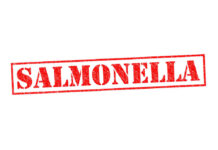
Sticker shock is sweeping the nation as inflation pushes restaurant owners to charge up to $17 for an egg sandwich, exposing just how severely leftist fiscal mismanagement and regulatory overreach have devastated everyday American life.
Story Snapshot
- Egg prices have skyrocketed due to avian flu outbreaks and restrictive regulations, forcing unprecedented menu price hikes.
- Restaurants are charging as much as $17 for a single egg sandwich, with owners citing unavoidable cost surges and supply chain chaos.
- Independent restaurants and lower-income customers are hardest hit, while large chains use their leverage to soften the blow.
- Industry experts warn these price hikes may become permanent if regulatory pressures and supply disruptions persist.
Avian Flu and Regulatory Mandates Drive Egg Price Surge
Late 2023 saw severe avian influenza outbreaks across the country, leading to the mass culling of tens of millions of egg-laying hens. This devastating blow to supply coincided with persistent post-pandemic inflation, sending wholesale egg prices skyrocketing to an average of $7.34 per dozen in early 2025—a 51% surge since the start of the year.
Meanwhile, new cage-free mandates in several states have further restricted supply and increased costs. These regulatory burdens, layered onto an already strained supply chain, have forced restaurant owners to pass costs directly to consumers.
Restaurant owners say inflation forcing $17 for egg sandwich — here’s the math behind it https://t.co/J2CgFgdP6E pic.twitter.com/jHRrjAiEKL
— New York Post (@nypost) October 19, 2025
Owners report that the combined effect of higher feed, transportation, and labor costs, along with regulatory mandates, has made the math behind a $17 egg sandwich painfully clear.
Many independent operators, lacking the negotiating power of large chains, are especially vulnerable. While some restaurants have implemented explicit surcharges for egg-based menu items, others have reduced offerings or raised prices outright.
The impact is felt most acutely in smaller establishments and among lower-income customers, whose dining options are shrinking as prices climb.
Consumer Frustration and Industry Response Intensify
Media coverage has highlighted the real-world math behind these menu prices, with restaurant owners displaying cost breakdowns to justify the increases.
Consumers, already frustrated by years of inflation sparked by fiscal mismanagement, are now confronted with the absurdity of paying premium prices for basic breakfast fare. Some have accepted the new reality, but many are scrutinizing every purchase and rethinking their dining habits.
The restaurant industry is experiencing the accelerated adoption of cost-cutting measures and alternative ingredients, with experts warning of long-term changes in consumer price expectations and possible permanent menu shifts.
As restaurant operators struggle to maintain profitability, industry analysts note that government overreach and regulatory pressure risk driving even more small businesses out of the market.
The consolidation of the industry favors large chains that can weather supply shocks, leaving independent restaurants and communities more exposed to economic volatility. This undermines local entrepreneurship—a core conservative value—and threatens the fabric of family-owned businesses across the country.
Expert Analysis and Economic Implications
Leading industry voices, like agricultural economist Jada Thompson and IFMA CEO Phil Kafarakis, point to a unique convergence of supply and demand shocks as the primary driver of the crisis.
They caution that while some price increases may be enabled by consumer willingness to pay, most evidence points to genuine and persistent cost pressures. Data from the Bureau of Labor Statistics and USDA confirm the scale and duration of egg price inflation, while regulatory changes continue to exacerbate supply constraints.
There remains debate over whether restaurants are padding margins, but the overwhelming consensus is that fiscal and regulatory mismanagement have produced a perfect storm for the industry.
Short-term impacts include menu price increases, reduced egg-based offerings, and widespread sticker shock.
Longer-term consequences may see permanent shifts in consumer habits, increased use of substitutes, and further industry consolidation. Independent restaurants and lower-income communities are disproportionately affected, threatening the stability of local economies.
As conservative Americans have long warned, unchecked government intervention and impractical regulations are eroding the bedrock of our economy—leaving hardworking business owners and families to bear the brunt of policy failures.
Sources:
Egg prices force restaurants to surcharge, raise costs in 2025 – Business Insider
Is US breakfast boom contributing to high egg prices? – NSJ Online
Nobody’s spending $17 on an egg sandwich – AOL
How restaurants are dealing with rising egg prices – Back of House



















